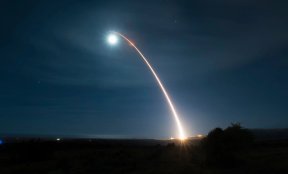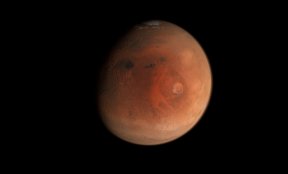I’m fascinated by cosmology. What's not to love? It's the science of the origin and evolution of the universe and its ultimate fate. And the great thing is you can kind of figure a lot of it out by assuming the Big Bang happened and just working forward from there.
One of the bits of evidence we have for the Big Bang is the leftover radiation from that time. Back then the universe was impossibly hot and dense but over the last 13.8-billion years it has slowly cooled and is now just 2.7° above absolute zero (that's the Kelvin temperature scale – it's equivalent to about -270°C). We can actually measure this, all of which is to say that this radiation, known as the cosmic microwave background or CMB, is pretty compelling evidence that the Big Bang happened.
Now we do have some really cool technology these days, what with particle accelerators, gravitational-wave detectors, and space-based telescopes. One of those telescopes, the James Webb Space Telescope (JWST) has been looking at the early universe, almost as far back in time as the Big Bang, and it's found some pretty large, bright galaxies. According to what we think we know, much bigger than should have been able to form in that short time. Just recently, for example, we discovered the Big Wheel galaxy, a roughly 2-billion year old huge spiral galaxy that's much bigger than our Milky Way. Problem is that our models of galaxy formation suggest that galaxies this young haven't had the time to grow to be so big. Any find like this should be exceedingly rare. But it's not – the JWST has found many more examples of should-be-rare but seem-to-be-common galaxies.
Alright, so back to the CMB. There's some new research around that speculates that the radiation we are attributing to the CMB – which, remember, is a by-product of the Big Bang – is really just radiation from all of these huge, young galaxies. There would have been a lot of dust around back then, so maybe the galaxies are heating up the dust, and what we are seeing is the radiation being re-radiated by that dust. Maybe it's not from the Big Bang at all. When the researchers calculated the expected temperature of the radiation that we would measure today, they got – you guessed it – about 2.7°K, the same temperature as the CMB. And that's not all. They say that even their most conservative estimates suggest this radiation from early galaxies accounts for at least some of what are attributing to the CMB, but it could even be all of it.
In other words, the entire foundation of cosmology, if this turned out to be correct, would be in doubt. Hmm.
To be clear, this is all highly speculative. We have a really good cosmological model that most people who know generally agree on. It's called the ΛCDM model. The Greek letter lambda (Λ) says the universe is expanding at an accelerating rate, and CDM stands for cold dark matter, cold meaning slow and slow meaning slower than the speed of light. So, we have a mathematical model that predicts dark energy, cold dark matter, and of course us, normal matter. And it provides a good account of all sorts of things we see in the Universe.
Also, this new hypothesis doesn't do a great job of explaining some of the characteristics of the CMB. Let the battle begin!
So, this is a really interesting piece of research, but there's no need to worry about the end of cosmology just yet. It will be fascinating to hear more counter arguments to this somewhat plausible upending of the status quo, but in the meantime I think we can all sleep easy at night and assume that the CMB is still the leftover radiation from the Big Bang.



